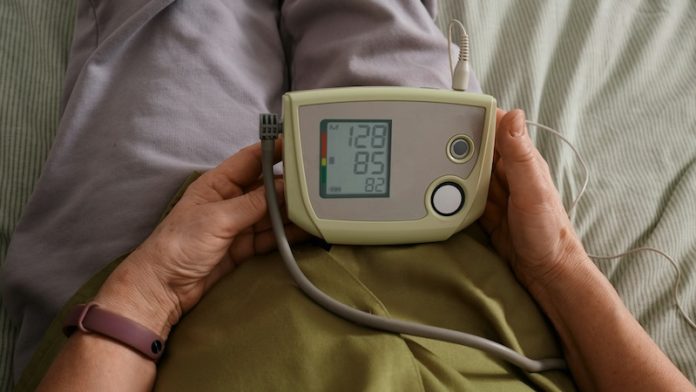
Most people are used to having their blood pressure checked while sitting comfortably at the doctor’s office. It’s been the standard method for decades, helping doctors spot signs of heart disease and other health problems. But new research shows that this common way of measuring blood pressure might not tell the whole story.
A recent study presented at the American Heart Association’s Hypertension Scientific Sessions in 2023 found that blood pressure taken while lying down could uncover risks that seated measurements miss. This discovery could lead to major changes in how we understand and manage heart health.
The study was led by Duc M. Giao, a medical student at Harvard Medical School. Giao and his team looked at health records from over 11,000 adults who took part in a large U.S. study back in the late 1980s.
These participants had their blood pressure measured while lying down, and their health was tracked for almost 30 years. The goal was to see whether blood pressure readings in different body positions could predict long-term health outcomes.
What they found was surprising. Around 16% of the people in the study had high blood pressure when lying flat, even though their blood pressure was normal when sitting. This means that their risk could have gone unnoticed if only the standard seated test was used.
More importantly, the people with high blood pressure while lying down were more likely to develop serious health problems later in life, including heart disease, heart failure, stroke, and even early death.
These risks were similar to those seen in people who had high blood pressure in both positions. In other words, lying-down readings could reveal hidden dangers that the sitting test might miss.
Why does this matter? For people with type 2 diabetes, obesity, or a family history of heart problems, knowing the full picture of their blood pressure is crucial.
According to Giao, checking blood pressure in more than one position—sitting, standing, and lying down—can give a better view of someone’s heart health. This could also help doctors adjust treatment plans and prevent serious problems before they start.
This research focused on middle-aged adults, which makes the findings especially important for people in their 40s and 50s. This is often the time when blood pressure and heart risks begin to rise, even if symptoms haven’t shown up yet.
While more studies are needed to see if the same results apply to older adults, the message is already clear: blood pressure changes depending on your body’s position, and those changes matter.
For many, this study is a wake-up call. It suggests that a quick blood pressure check at the clinic might not be enough. A more complete test could include lying-down measurements, especially for people with known risk factors.
In the future, routine check-ups may change to include blood pressure readings in different positions. This simple adjustment could help doctors catch hidden risks early and save lives.
So next time you’re at the doctor’s office, it might be worth asking to have your blood pressure checked while lying down, too. It could reveal something important about your heart that a sitting test alone can’t show.
If you care about high blood pressure, please read studies that early time-restricted eating could help improve blood pressure, and natural coconut sugar could help reduce blood pressure and artery stiffness.
For more information about blood pressure, please see recent studies about How to eat your way to healthy blood pressure and results showing that Modified traditional Chinese cuisine can lower blood pressure.
Copyright © 2025 Knowridge Science Report. All rights reserved.



